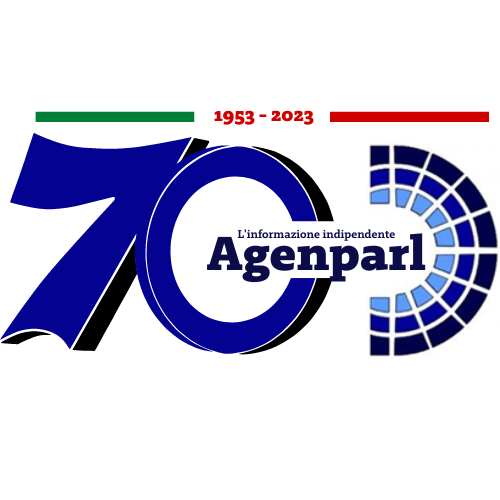 (AGENPARL) - Roma, 10 Aprile 2023
(AGENPARL) - Roma, 10 Aprile 2023(AGENPARL) – lun 10 aprile 2023 Since its launch in 2020, the Quantum Systems Accelerator has enabled major progress in quantum information science – including record-setting sensors, smarter algorithms, and demonstrating a 256-atom quantum device can deliver science results
https://r20.rs6.net/tn.jsp?f=001Shs-D0MQG3N31dOIoqRMwr5hATwknpTzE00IBtsE82vg3ehi1Mks8AKiFCf2spR4F-2QLVwqECXi-f_PB7SZghfxHo-6HcffG9E7dOUWz1f8enlmyW2eJf0aj0zfwcF5wAIuAakC7s9G5WztIqFz-A==&c=8lOUjDzslRZ9zEUHRyIxcbPghXwaRjHKpk3sefIrd2VROCz6QD0a9Q==&ch=FtVSETCB4E2j93RfXAQRF1jlxOp_Nr4rKRN5e5PBAfBeQH7IKKHMAA==
[Five Ways QSA is Advancing Quantum Computing](https://r20.rs6.net/tn.jsp?f=001Shs-D0MQG3N31dOIoqRMwr5hATwknpTzE00IBtsE82vg3ehi1Mks8O2TB1wFMeMfqDtAw0TehCGzwnwnof-edeh62mao9GB2IC3kggF6ML_xIubimDG7v74r1o1VC_WdwVLCznOrlWpfg5U8u5od3b-BkP-Hk6z3jTYdMWOuGC8mUcXdHAUDZmaZKTugvInQm0sQye_dBChfRN4kGfpIBQej8XBs-AKE5rbis73ajUM=&c=8lOUjDzslRZ9zEUHRyIxcbPghXwaRjHKpk3sefIrd2VROCz6QD0a9Q==&ch=FtVSETCB4E2j93RfXAQRF1jlxOp_Nr4rKRN5e5PBAfBeQH7IKKHMAA==)
Since its launch in 2020, the Quantum Systems Accelerator has enabled major progress in quantum information science – including record-setting sensors, smarter algorithms, and demonstrating a 256-atom quantum device can deliver science results
https://r20.rs6.net/tn.jsp?f=001Shs-D0MQG3N31dOIoqRMwr5hATwknpTzE00IBtsE82vg3ehi1Mks8O2TB1wFMeMfqDtAw0TehCGzwnwnof-edeh62mao9GB2IC3kggF6ML_xIubimDG7v74r1o1VC_WdwVLCznOrlWpfg5U8u5od3b-BkP-Hk6z3jTYdMWOuGC8mUcXdHAUDZmaZKTugvInQm0sQye_dBChfRN4kGfpIBQej8XBs-AKE5rbis73ajUM=&c=8lOUjDzslRZ9zEUHRyIxcbPghXwaRjHKpk3sefIrd2VROCz6QD0a9Q==&ch=FtVSETCB4E2j93RfXAQRF1jlxOp_Nr4rKRN5e5PBAfBeQH7IKKHMAA==
A new impact report from the Quantum Systems Accelerator highlights five of the many advances the center has made since its launch in 2020. (Credit: Jenny Nuss/Berkeley Lab)
Quantum computers could someday perform certain calculations faster than classical computers, with applications in science, medicine, security, finance, and beyond – but first, researchers need to improve the underlying science and technology. Since its launch in 2020, the Quantum Systems Accelerator (QSA) has already made major advances in both hardware and programming, improving the quantum tools that researchers hope will help solve some of humanity’s biggest questions.
QSA is one of the Department of Energy’s five [national quantum information science research centers](https://r20.rs6.net/tn.jsp?f=001Shs-D0MQG3N31dOIoqRMwr5hATwknpTzE00IBtsE82vg3ehi1Mks8O2TB1wFMeMfWCjERnX_8POz8IFzU0QF1A5V4lGIa9Qv4gOu7D2tRRXZiDgGGmYx5bP-pnZ1NQB_3E3Sh5s2WnpIQrfV8mTQeP5puB5_NcfzzH5NcMFAo-UVr6fXmmwFFmFqaXmEm3VS&c=8lOUjDzslRZ9zEUHRyIxcbPghXwaRjHKpk3sefIrd2VROCz6QD0a9Q==&ch=FtVSETCB4E2j93RfXAQRF1jlxOp_Nr4rKRN5e5PBAfBeQH7IKKHMAA==) with a focus on all three major technologies for [quantum computing](https://r20.rs6.net/tn.jsp?f=001Shs-D0MQG3N31dOIoqRMwr5hATwknpTzE00IBtsE82vg3ehi1Mks8O2TB1wFMeMfDl2IcsMT409GPU3q6a3X76en5fxxZSq6msy8O8Gt9z_iJhw2avNyivtfD1L_8Q7IVscSIjff_y-ZAvVh0kLd0ml1eBHYB6XwkL4idtrKfOz-vO1sK8mAvhxCD8yzTqXC&c=8lOUjDzslRZ9zEUHRyIxcbPghXwaRjHKpk3sefIrd2VROCz6QD0a9Q==&ch=FtVSETCB4E2j93RfXAQRF1jlxOp_Nr4rKRN5e5PBAfBeQH7IKKHMAA==): superconducting circuits, trapped-ion systems, and neutral atoms.
“We believe there are synergies between these three big technologies and that each one may have unique abilities and applications for solving different kinds of problems,” said Rick Muller, the director of QSA and a senior manager at Sandia National Laboratories. “By looking at all three of them together, we can more easily find their strengths, apply innovations across technologies, and design a path forward to a universal quantum computer.”
Led by Lawrence Berkeley National Laboratory (Berkeley Lab), QSA brings together more than 250 experts from 14 other institutions: Sandia National Laboratories, University of Colorado Boulder, MIT Lincoln Laboratory, Caltech, Duke University, Harvard University, Massachusetts Institute of Technology, Tufts University, UC Berkeley, University of Maryland, University of New Mexico, University of Southern California, University of Texas at Austin, and Canada’s Université de Sherbrooke.
Together, QSA researchers are developing ways to better control qubits (the building blocks of quantum computers), finding algorithms and applications for current and emerging quantum information systems, and speeding their transfer to industry. QSA is also preparing the next generation of quantum scientists through activities, including peer mentoring programs, career fairs, and training for high school students and teachers.
“We’re catalyzing national leadership in quantum information through co-design of quantum devices, algorithms, and engineering solutions, with the goal of delivering quantum advantage,” said Bert de Jong, the deputy director of QSA and a senior scientist at Berkeley Lab. “We’re advancing imperfect quantum technologies and figuring out how we in academia and the national laboratories working with our partners in industry can start using them today. At the same time, we’re preparing scientists to use them to solve big science questions.”
In March, the Quantum Systems Accelerator issued a full [impact report](https://r20.rs6.net/tn.jsp?f=001Shs-D0MQG3N31dOIoqRMwr5hATwknpTzE00IBtsE82vg3ehi1Mks8O2TB1wFMeMfxuIahq8n9Ru5GcjHVE-hTKyTdcV57pmgPli97VSAJCQsGi1Ubd2BPzDJXeLfYPQAbiw4kxOptVYO7F4E6wLX8BTZw4izFJo0N3yLVGAFjFLXe3awjortc6dmntxZQ_rej6LuIx47Zm5knFd9gluVZUHQwKZZ2nNetXfOEbviR9vnp7XqLHJzXdbCGts58qLSJ6BloW1UQXo=&c=8lOUjDzslRZ9zEUHRyIxcbPghXwaRjHKpk3sefIrd2VROCz6QD0a9Q==&ch=FtVSETCB4E2j93RfXAQRF1jlxOp_Nr4rKRN5e5PBAfBeQH7IKKHMAA==) on advances made since the center launched in 2020. Here are five highlights achieved by QSA scientists and partners so far:
Studied quantum magnetism and matter with a 256-atom computer (assembled using laser beams)
QSA researchers from Harvard University and MIT used a special quantum device to observe several exotic states of matter for the first time and studied magnetism at the quantum level. Their findings help explain the physics underlying materials’ properties and could be used to engineer exotic materials of the future. Their research was performed using a “[programmable quantum simulator](https://r20.rs6.net/tn.jsp?f=001Shs-D0MQG3N31dOIoqRMwr5hATwknpTzE00IBtsE82vg3ehi1Mks8O2TB1wFMeMf6RTO02ApvjmMxkP1nY7EZKCiU6ys2-RQtmb2SV_r1AOKDgHHZMilRKtc_vr-6l1SUzZutrNIFJhaPTp1tLXsuBgPo-SmU6VGq_J83WX9MsrNf-T4b_YlkcA2o7wJ-9Tk3hyNC3rAEAVgppsNPZaoTLys1Qn5PiBGgfpDJvmVaWOSpWBL5mhDP7_7q1GIP76idBz5YrbulamkSD3FFnOI3felCpdu-Cky&c=8lOUjDzslRZ9zEUHRyIxcbPghXwaRjHKpk3sefIrd2VROCz6QD0a9Q==&ch=FtVSETCB4E2j93RfXAQRF1jlxOp_Nr4rKRN5e5PBAfBeQH7IKKHMAA==)” similar to a quantum computer. The team at Harvard built the simulator using hundreds of laser beams known as “optical tweezers,” arranging 256 ultra-cold rubidium atoms that acted as qubits. By some measures, that makes it the largest programmable quantum processor demonstrated to date. By moving the atoms into shapes such as squares, honeycombs, and triangles, QSA scientists manipulated how the qubits would interact with one another and made important measurements of [quantum phases of matter](https://r20.rs6.net/tn.jsp?f=001Shs-D0MQG3N31dOIoqRMwr5hATwknpTzE00IBtsE82vg3ehi1Mks8O2TB1wFMeMfBozqDYuROnzaawF1D06FPx4SeZ7Ahf3A8yq8S1gthE1BbKCYxlHrLv8wnICnHiF3590CY1sIkII9lRd2wCOujJJTYF6gzFXdKXjK7IBDb1y0mh5CnFmjcw==&c=8lOUjDzslRZ9zEUHRyIxcbPghXwaRjHKpk3sefIrd2VROCz6QD0a9Q==&ch=FtVSETCB4E2j93RfXAQRF1jlxOp_Nr4rKRN5e5PBAfBeQH7IKKHMAA==) and [quantum spin liquids](https://r20.rs6.net/tn.jsp?f=001Shs-D0MQG3N31dOIoqRMwr5hATwknpTzE00IBtsE82vg3ehi1Mks8O2TB1wFMeMf2SN1waKmAunjMJVWnycegNn_m4GVjm6S39ial0zxJXzfBkEPWPk9Bi49RVW59yHhBlNlCu7OP6S0KcERfJNh1epf8QwLx7QTD9B2d0wHidzLRmO-TLcRZVRuukwDw8ui&c=8lOUjDzslRZ9zEUHRyIxcbPghXwaRjHKpk3sefIrd2VROCz6QD0a9Q==&ch=FtVSETCB4E2j93RfXAQRF1jlxOp_Nr4rKRN5e5PBAfBeQH7IKKHMAA==).
Stacked qubit layers on microchips to help computers grow
One way to build a useful quantum computer is by connecting qubits with superconducting circuits, which can conduct electricity without energy loss when extremely cold. But with every qubit added, engineering the connections and electronics becomes more difficult. You can imagine a group of qubits spread out like a grid on a piece of paper; trying to snake connections to the innermost qubits causes crowding that can degrade the qubits or signals. To address the challenge, scientists at MIT and MIT Lincoln Laboratory are taking inspiration from commercial electronics and investigating qubits with layers. These stacks of electronic chips reroute the connections to attach vertically, as though perpendicular to our grid – a kind of “3D integration.” The change allows researchers to potentially connect, control, and read larger numbers of qubits. Through funding from QSA and other partners, they’ve already built and tested a [“2-stack” qubit chip](https://r20.rs6.net/tn.jsp?f=001Shs-D0MQG3N31dOIoqRMwr5hATwknpTzE00IBtsE82vg3ehi1Mks8O2TB1wFMeMfYvMJ-kC-OU9ObJgfXxWdtShgDF_-_USu67vyG1Ul0Gjc_wuf30jXEdH-br7b7U_9qEgepiLWqY9L7OMEBlsUJjyucOgu-lXK7-IocnSmehYpANkbhsxZCw==&c=8lOUjDzslRZ9zEUHRyIxcbPghXwaRjHKpk3sefIrd2VROCz6QD0a9Q==&ch=FtVSETCB4E2j93RfXAQRF1jlxOp_Nr4rKRN5e5PBAfBeQH7IKKHMAA==) (with two layers), and QSA researchers are working on further enhanced versions. This milestone is an important step toward more densely packed qubits that can perform more complex calculations.
Made a record-setting quantum sensor that can be used to hunt dark matter
